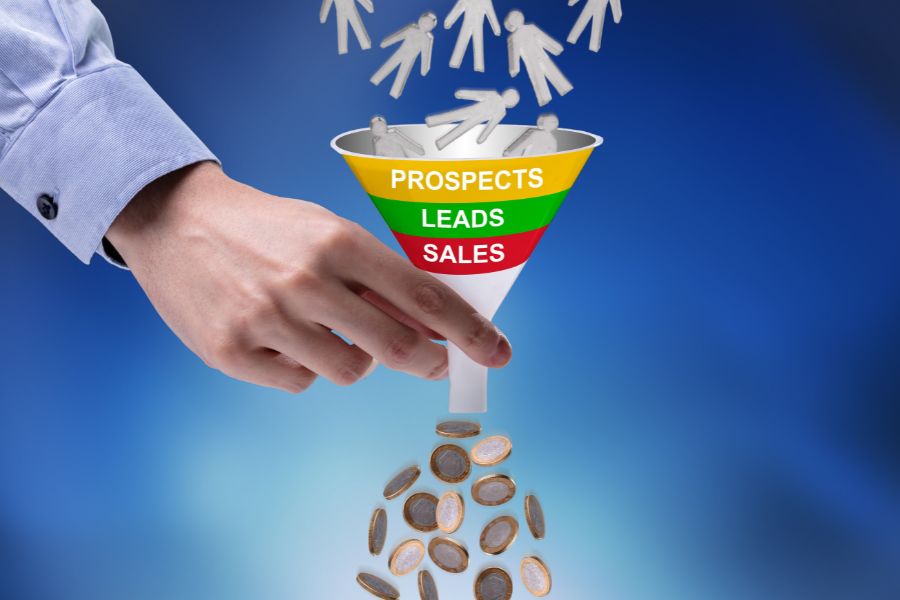Understanding the dynamics of a sales funnel is paramount for small business owners in America looking to grow and thrive in an ever-competitive market. The key to flourishing is understanding how to guide potential customers through a sales funnel toward making a purchase. So, what is it, and how can you make it work for your business?
What is a Sales Funnel?
In essence, a sales funnel is a systematic process that businesses employ to guide potential customers from the first interaction towards making a purchase. This process starts from creating awareness about the business or product to creating interest, prompting decision-making, and finally, instigating the action to buy.
The ‘funnel’ metaphor comes from the idea that you start with a wide net (awareness) catching a large number of potential customers, and as they progress through each stage (interest, decision, action), the numbers dwindle, leaving only those ready to make a purchase.
Different Types of Sales Funnels and Their Uses
While the basic structure remains the same, there are variations tailored to different business models and industries. Here are some examples:
- E-commerce Sales Funnel: This funnel starts with an ad or a social media post to capture attention, then moves to the product page, the shopping cart, and finally, checkout.
- Webinar Funnel: Here, the funnel initiates with a registration for a free webinar, a reminder sequence leading to the webinar, the webinar itself which often includes a sales pitch, and lastly, the offer to buy.
- Free-plus-shipping Funnel: A popular funnel among book sellers and physical product owners. The customers are enticed by a free product, and they only need to pay for the shipping. It starts with the product offer, a form for shipping details, a cart, and ends with upselling additional products.
Who Needs it?
If you are a small business owner seeking to convert visitors into paying customers effectively, a sales funnel is your indispensable tool. Whether you operate in the B2B or B2C space, offer products or services, an optimized sales funnel can help streamline your marketing and sales processes, increase conversion rates, and maximize profits.
Tools to Get It Off the Ground
Starting your journey might seem daunting, but various tools can help simplify the process. ClickFunnels is an all-in-one tool that helps create different types of sales funnels. Leadpages is excellent for creating landing pages, and MailChimp is a popular choice for email marketing.
Google Analytics is a free tool that tracks how users interact with your website and can provide invaluable insights to optimize your sales funnel.
Getting Started with Your Sales Funnel
Starting is a matter of understanding your customers and their journey. Here are the steps:
- Awareness: Find out where your customers spend their time online, and make your presence felt there. Social media platforms, search engine marketing, and content marketing are excellent tools for this stage.
- Interest: Develop valuable content that solves your potential customers’ problems. This could be blog posts, videos, webinars, or ebooks.
- Decision: Offer unique selling propositions, bonuses, discounts, or money-back guarantees to prompt a decision.
- Action: Make the purchase process as easy as possible. A complicated checkout process can make you lose potential sales at the final stage.
Sales funnels are not a one-size-fits-all solution. It is essential to continuously test and tweak your funnel for optimal performance. This iterative approach allows your sales funnel to evolve with your business needs and market changes, securing your growth and success in the long run.
—
Ready to take your business to new heights? Uncover the secret sauce to success with our in-depth guide on researching network opportunities. Don’t miss out on this game-changing resource. Explore it here.


Recent Comments